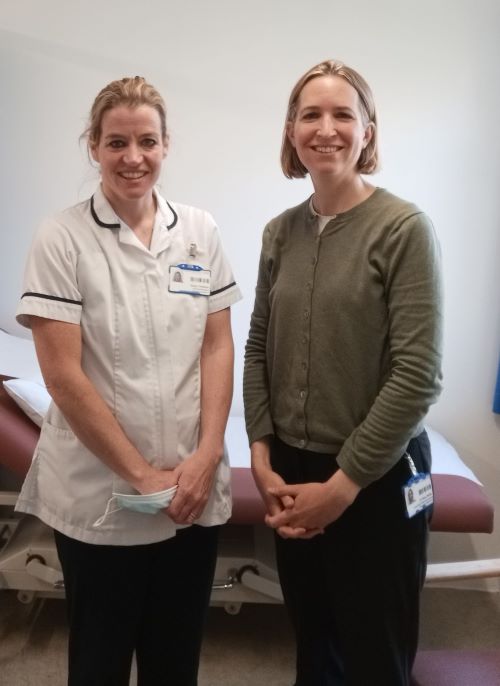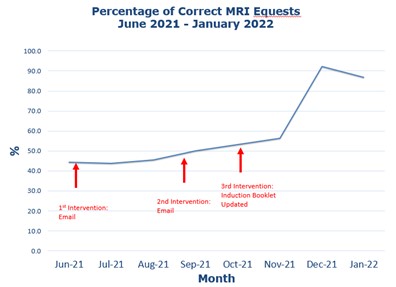Increasing the percentage of patients having the correct MRI protocol for suspected axial SpA at University Hospital Southampton
Blog by Jasmine Kew, Jacqui Tomkins, Dinny Wallis

Introduction to the project
Suspected axial spondyloarthritis (axSpA) is a common presentation to the rheumatology clinic. For patients in whom X-ray fails to identify sacroiliitis, Magnetic Resonance Imaging (MRI) is recommended. Specific inflammatory back pain sequences take less scanning and reporting time, than a whole spine protocol. Prior to this project, it was noted that some patients in our clinic were having unnecessary full spine protocols, and/or imaging of the SIJs was missed. Our aim was to increase the percentage of patients having the correct MRI protocol.
Actions to address the problems and using QI techniques
This project was based on 3 PDSA cycles of audit. Baseline data were acquired to identify MRIs requested from Nov 2018-Nov 2019 by rheumatology or gastroenterology teams for suspected axSpA. Data were extracted each month from 1 June 2021 to 21 January 2022. Several simple interventions were introduced sequentially. In June 2021, a new MRI equest bundle was developed, including the SIJ and limited whole spine – teams were informed by email and educational meetings. A second, personalised email was sent in Sept 2021 to individuals, highlighting incorrect requests. The 3rd intervention was to update the junior doctor induction booklet.
Overcoming barriers
While it was quite straightforward to implement a new MRI protocol, educating colleagues and ensuring that the protocol is used by the all clinicians in rheumatology and gastroenterology departments is more difficult.
Our light bulb moments
We realised that personalised education in the form of an email to the requestor is more effective than a group email which is easily missed or not read.
Results from the project
After the introduction of the new protocol, in June 2021 and July 2021 respectively, 44% of requests were correct. After Intervention 1 compliance increased by approximately 5% each month with 46% of requests correct in Aug 2021 and 50% in Sept 2021. It was felt that 50% compliance was not adequate, our target being 100%. We speculated that using a personalised approach for each requestor may aid learning. After Intervention 2 (personalised emails), compliance increased, with 53% of requests in October 2021 correct. After Intervention 3 (induction document) compliance increased to 56% (Nov 2021), 92% (Dec 2021), 87% (Jan 2022).
We have demonstrated that sequential tests and measurement of changes over time can lead to sustained improvement in practice. Our project has increased the number of correct MRI requests for patients with suspected axSpA and reduced the use of radiology resources (scanning and reporting time).
